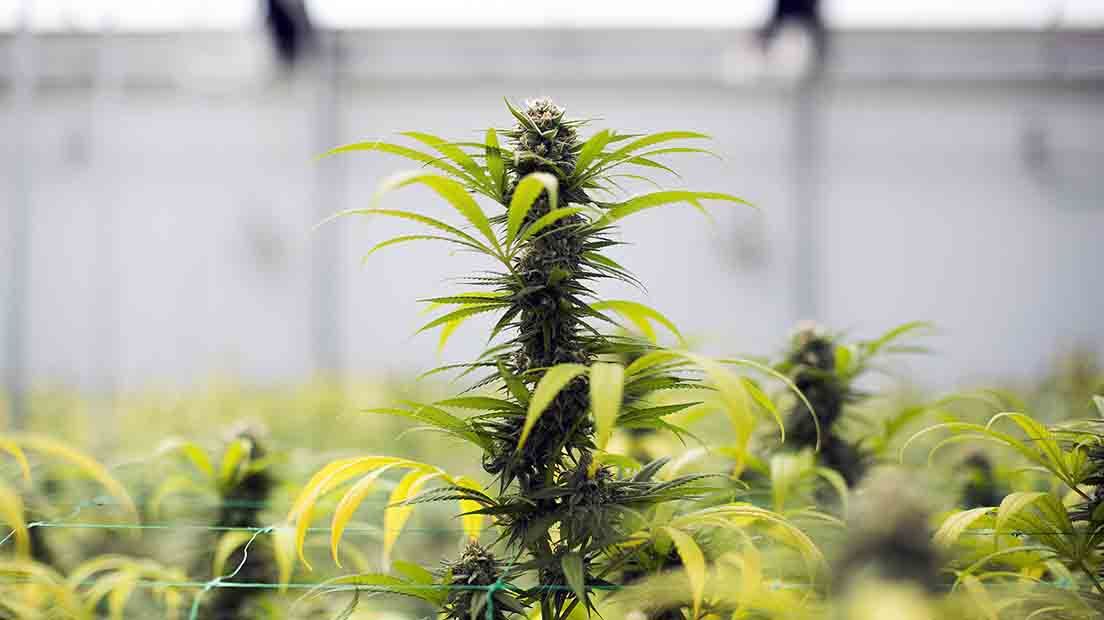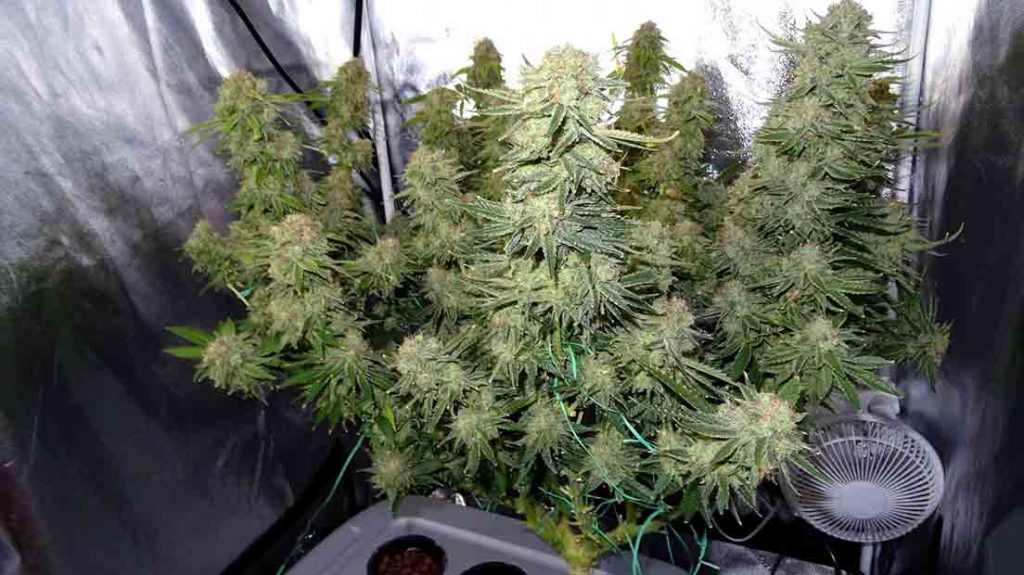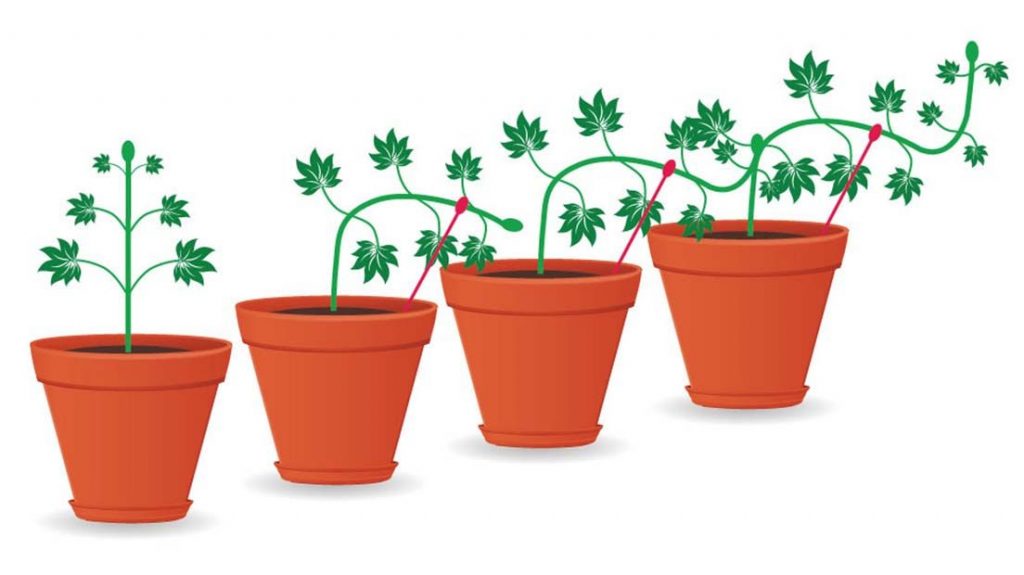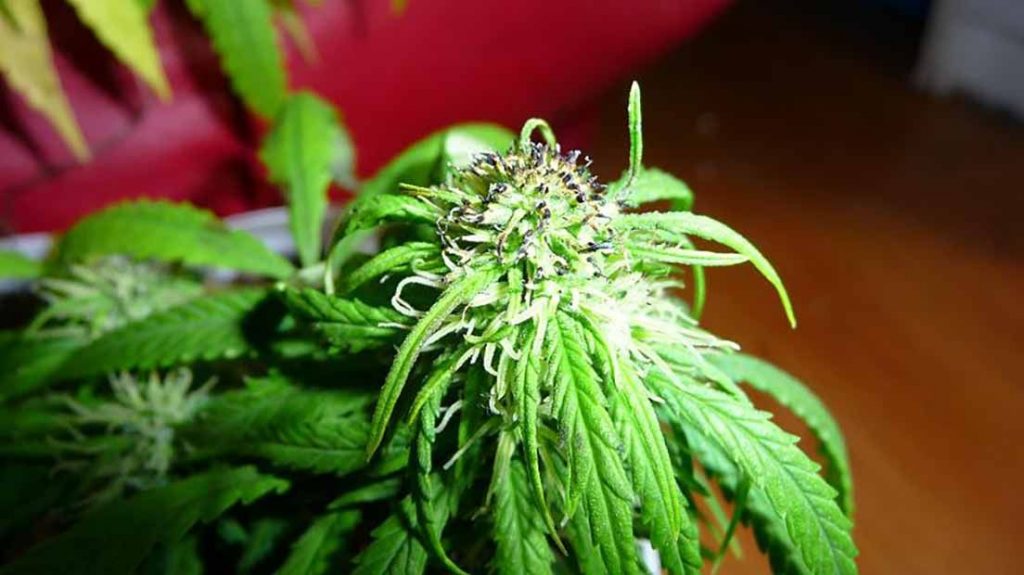The Pruning Guide: Everything You Need To Know
In today’s article we are going to give you the definitive guide to pruning marijuana plants, reviewing the different techniques to be able to do each different pruning, all of them with a different use case. Pruning marijuana is very important, however it is not always necessary, pruning should be done when you know what you are doing and just for a specific purpose.

Why is pruning cannabis important?
Pruning marijuana is a process that can bring many advantages to marijuana growing. When we prune marijuana we are compensating the level of energy that the plant allocates to each of its resources. On the one hand, there are the leaves, essential for taking in nutrients and light, and on the other, its fruits, the buds.
The fruits of the plant require a lot of effort to grow to the desired point. Often when pruning marijuana what we do is to remove other parts of the plant, so that it does not have to spend energy on this part and can focus all its efforts on the creation of a huge central bud. But pruning is not always for this purpose.
What does pruning cannabis achieve?
Pruning the cannabis plant has different effects, depending on the pruning applied. For example, pruning at the top conditions the plant to grow wide instead of tall, which can be very useful when there is no more vertical space.
Pruning marijuana can also allow light to penetrate other areas of the plant that it was not reaching before. With this, you can encourage the growth of parts of the plant that were in a dark area.
The importance of pruning marijuana lies precisely in the fact that we can mould the plant towards a specific purpose. Normally, in the case of marijuana plants, the main purpose is to obtain greater production of buds, with more resin and better organoleptic properties.
What is pruning?
As you may have deduced, pruning consists of cutting parts of the plant to achieve a certain effect, never cut without a reason or without knowing the effect it will produce.

To prune marijuana safely, it is best to use scissors like the Easybud, which allow you to cut each branch to the end. This is achieved by having a very sharp tip and a wide margin to be introduced between the plants. Here we show you what to do with those extra leaves.
Podding Different Strains
Understanding the specific pruning needs for different strains of marijuana, such as Indica, Sativa and hybrids, can significantly improve the health and yield of the plants.
Pruning in Indica Strains
Indica strains, with their dense and compact growth, can benefit greatly from pruning techniques that improve both air circulation and light penetration. This is vital to prevent problems such as mould and moisture related diseases. Pruning on these vines focuses on clearing excessive foliage and opening up the canopy of the plant. This allows light to reach the lower parts, promoting more uniform and healthy growth. In addition, good air circulation reduces the risk of pests and improves the overall respiration of the plant, which is vital for optimal development. Strategic pruning in Indicas, therefore, not only improves the overall health of the plant, but can also significantly increase the quality and quantity of the harvest.
Pruning in Sativa Strains
Sativa strains, with their more stretched and upright growth, require a different pruning approach to optimise light exposure and encourage more uniform growth. Due to their tendency to grow taller, these plants can develop areas with less access to light, which can result in uneven growth and less flower production in the lower areas. Pruning Sativas strategically involves cutting back certain areas to redistribute the plant’s energy to the buds and lower leaves, allowing for more balanced and efficient growth. This process not only improves the distribution of light and energy throughout the plant, but can also positively influence the quality and uniformity of the final harvest.
Pruning in Hybrid Strains
Hybrid strains, with their varied growth patterns, require a more customised pruning approach, tailored to their unique Indica and Sativa characteristics. These strains can exhibit intermediate growth, combining aspects of both parent strains. For example, an Indica-dominant hybrid may require pruning that promotes air circulation and light penetration, while a hybrid with Sativa characteristics may benefit from techniques that promote more balanced growth. The key is to carefully observe the growth tendencies of each plant and adjust pruning to maximise its potential, thus balancing the needs of both genetic lines.
A thorough understanding of the differences in pruning needs between marijuana strains can lead to a healthier and more bountiful harvest.
Types of pruning
When talking about types of pruning marijuana, almost everyone thinks of the most common types of pruning: apical pruning, FIM, lollypopping or LST, among others. Although the latter two are usually framed within the actions of causing stress to marijuana in order to increase production. The truth is that pruning is essentially just that, a type of action that alters some natural growth pattern of marijuana with the aim, typically, of increasing production.
Below you will find an explanation of what these and more ways of pruning cannabis plants.
Topping Pruning
Cannabis topping pruning may seem extreme at first, but don’t be afraid to do it. Topping pruning involves cutting off the central tip of the marijuana. This way, you get a fork in the centre of the plant’s tail in a Greek Y shape.
This helps the plant to stop growing vertically, so we send more energy to the side branches. This is perfect to get branched plants, with low height. Marijuana topping is recommended when you do not want your plants to grow vertically.
This topping technique for pruning marijuana is usually done with a SCROG technique. Also, it is an ideal pruning technique for long flowering plants and outdoors it will also be useful to control the height of the plants.

How and when to do Apical Pruning?
- It is normal to prune when the plant is still small, but never before the third node of leaves, at least the central stem should be cut leaving at least 3 pairs of branches at the bottom. It is important to do this during the vegetative growth phase, so that the plant can grow in width.
- The cut should be clean and leave enough space between the top pair of leaves and the bottom pair of leaves.
- It is highly recommended using a healing agent to cover the cut, so that no particles can enter and contaminate the plant. If this is not available, a little of candle wax is perfect.
- This can be repeated in order to have as many branches as possible and to grow as wide as possible, with a greater proliferation of lateral buds.
Fimming marijuana (FIM)
This technique of pruning marijuana is similar to apical pruning. This is because in both techniques the top of the tail must be cut off. However, there are differences, because instead of removing the whole bud, we cut 80% of it. In this way, we leave a part of the shoot and there is no gap that we had to cover when pruning the apical marijuana.
The aim of fimming marijuana is to get 4 to 6 new main branches at the top of the plant. It is the easiest way to increase the production of marijuana with a simple incision. It is important to not cut the whole tail, otherwise you will be doing apical pruning.
The procedure of pruning FIM marijuana is mostly useful to increase the production of branches to do cuttings in mother plants.

How to FIM?
- The first step to fimming marijuana is to find the third node of the plant. You will then need to make a cut, so that you remove 80% of the central tail, leaving 20% of the new node.
- The next step is to wait for the plant to recover. If the plant has a long growth, it is possible to do this technique several times.
Pruning low branches in Lollipopping
We have just seen the pruning techniques in the upper areas of the plant, but there are pruning techniques that seek precisely the opposite, cutting the lower branches to concentrate production at the top, for example, the lollipopping.
There are cannabis varieties, such as Critical, that grow in the shape of a cypress tree. For these varieties we should not cut the central bud, but try to concentrate the production in this central part. To do this, we must prune the plant from the branches on the side, so that the light can penetrate properly, resulting in a plant with a lollipop appearance.
As the buds that come out of the lower part of the plant are usually of poorer quality, as the light does not penetrate as much, what we ensure by lollipopping marijuana is a better production of superior buds. As the light hits the plant evenly.

How to do Lollipopping
- Firstly, we will examine the lower areas of the plant that are not well lit and that we can foresee will give less dense buds. We do this before the plant enters flowering.
- We then proceed to prune the marijuana by removing these parts, taking care not to damage the areas of the plant that we want to keep. When lollipopping, never prune more than 50% of the plant.
The LST technique
Although this is not exactly a prune, it is still about modifying the shape of the plant by orienting its growth through guides. Again, the aim is to bring light to the areas of the plant that we want to optimize, this time by bending the branches of the plant using string.
The aim of this technique is to increase the growth of the secondary branches and increase the total exposure of the plant to light. This creates large, uniform buds spread across the lower parts of the plant, rather than creating a tail of marijuana in the central part of the plant. It is the perfect method of pruning marijuana to make the most of the light hitting the plant.
LST is also a good way to hide a marijuana plant that can be seen in an outdoor grow. In this way, the marijuana plant acquires a curious appearance, much more horizontal and large tails of marijuana full of homogeneous buds. When leaves or branches appear that could obstruct the light, we will have to prune the marijuana in these parts.

How and when to do LST?
- To do LST, start by bending the main stem until the apical dominance is broken. The stem is malleable towards the side you want to orient the plant towards. This should be done when the plant is in vegetative stage, as it will be easier.
- For the plant to grow horizontally, you will have to tie it with something to the edge of the pot. Establishing the base shape in which the plant will grow.
- Ensure that the new branches to grow vertically are homogeneous and grow to the same height.
- In general, it is a technique that requires quite a lot of maintenance, as you will have to guide the growth of the plant so that the light hits it as well as possible.
Pinching pruning
This technique of pruning marijuana consists of crushing the central buds of each branch of the plant with your fingers. With this type of technique we favour the development of the lateral branches of the plant by slowing down the vertical growth of the plant. This gives the plant a bush-like shape.
When you prune your marijuana in this way, the plant will need a few days to heal and continue to grow as usual. It is a good way to obtain a plant of homogeneous height, which will increase the quantity and quality of the final production.
This technique requires experience and good hands, the more you use it, the more effective you will be with it. Once you have done it a couple of times or more, you will get the hang of this way of pruning marijuana by pinching or pizzicato, because of its similarity to the musical technique.

How to pinch marijuana?
- To do this method of pinching marijuana we have to locate the central buds of each branch and pinch them without breaking them, so that we keep the side buds intact.
- To do this, you should gently squeeze with your thumb and forefinger until you hear the buds make a slight crackling sound.
- During growth we should repeat this process of pruning the marijuana at the stem of the top node of the plant.
Super Cropping pruning
The technique of pruning marijuana called Supercropping does not involve cutting either, but in this case we will have to redirect the growth of the plants by crunching them, encouraging the vertical growth of the branches closest to the central stem.
Thus, apical pruning is not the only way to prune marijuana to encourage branching. This technique does not use cutting, but is categorised as a way of pruning marijuana by manipulating its structure to obtain better yields.
This technique of pruning marijuana involves breaking plant fibres in order to correct the growth of the plant using flanges. Care must be taken when applying pressure to bend the stem, as overdoing it can break it completely.

How to do SuperCropping?
- First, to do this way of pruning marijuana, you will need to select the branches you want to bend.
- Hold the branch with your thumb and forefinger and start bending the branch slightly to break the surface fibres.
- Bend the branch into the desired position and clamp it to the surface of the soil or pot.
- If you find that the branch is too loose, you can always reinforce it with a bit of tape.
The RIB technique
This can’t be considered pruning either, but rather, it consists of burning the cannabis plant. Yes, you heard right, it consists of burning the pistils of the buds at the top of the plant causing controlled damage to the plant.
These cell walls remain burnt causing their cells to multiply. As a consequence, new buds are created which will produce buds without leaves. This favours an increase in the quantity and quality of the harvest.
It is recommended to prune marijuana using the RIB (Ready, I burn) method on long flowering Sativa/Indica hybrids, as this type of pruning is done on the flowering plant.

How to RIB prune marijuana plants?
- We will have to wait until the plant has been in the flowering stage for at least 20 days, ideally up to 60 days of flowering.
- With a lighter, proceed to burn the upper pistils of the plant. Always be careful not to overdo it.
- We will have to wait for the plant to activate the hormones that will react by massively repopulating these affected areas. This will result in massive production.
Final tips on pruning cannabis
No matter what method is used to prune marijuana, it should always be done with a specific purpose in mind and knowing what you are doing. Also have good technique and practice to be able to do it well, otherwise all the work will have been for nothing. When it comes to pruning marijuana, do it carefully, take your time to find the places on the plant where it is best to prune.
It is a process that is perfected with experience. No one is going to become a master at pruning marijuana on the first day. But little by little, knowing the theory well and practising, you can achieve good results…
That’s all our review of the different ways of pruning marijuana. We hope you have found them useful. If you liked this article on how to prune marijuana, we suggest you read How Much Marijuana Does a Plant Produce? Cannabis Production Guide.
Founder of Experiencia Natural, creative and entrepreneur, designer, master in grower and marketing. For a normalization of all plants and substances, giving priority to patients and users.














